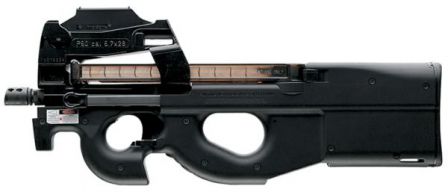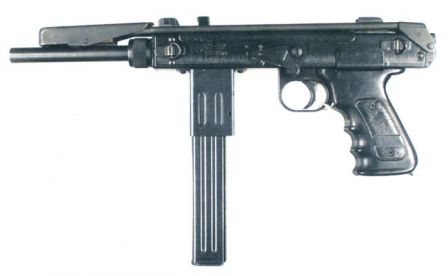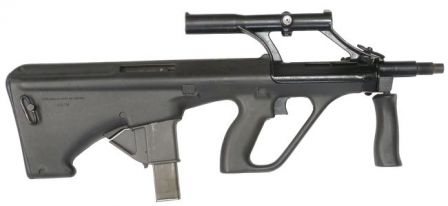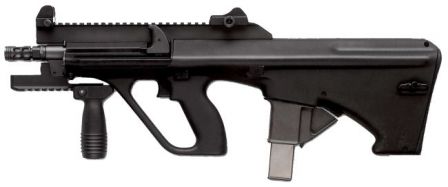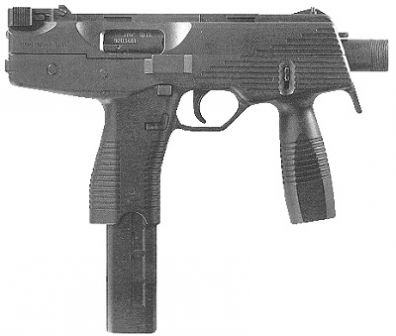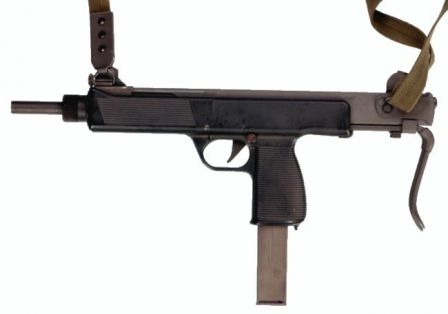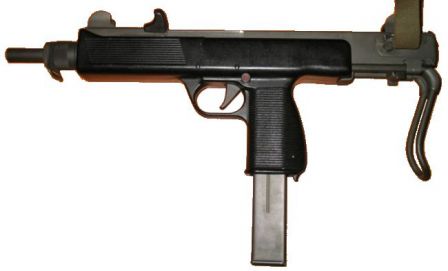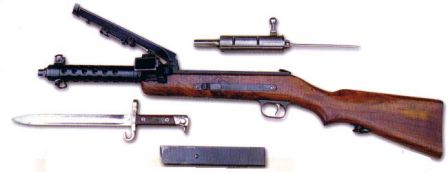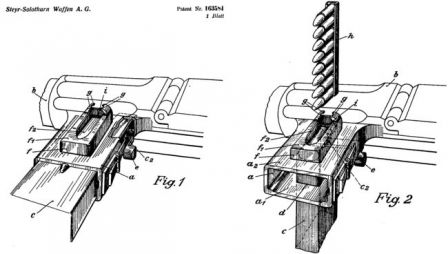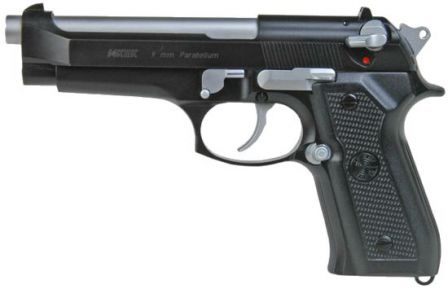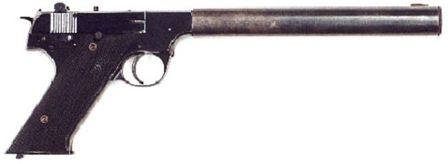FN P90 personal defense weapon / submachine gun in basic configuration, left side.
FN P90 personal defense weapon / submachine gun in basic configuration, right side.
FN P90 TR (triple rail version) personal defense weapon /
submachine gun, with installed accessories including optical sight on
top rail, flashlight on left rail, and silencer on the barrel.
FN PS90 - a civilian semi-automatic only version of P90 with long barrel.
Bottom view on the filed FN P90 magazine, showing position of the stored cartridges and cartridge in feed position.
FN P90 partially disassembled.
Characteristics
Caliber: 5.7x28mm SS190
Weight: 2.54 kg empty; 3 kg loaded with magazine with 50 rounds
Length: 500 mm
Barrel length: 263 mm
Rate of fire: 900 rounds per minute
Magazine capacity: 50 rounds
Effective range: 200 meters
The FN P90 submachine gun (SMG) was developed in the late 1980s as a
personal defense weapon for the troops whose primary activities does not
include small arms, such as vehicle and tank crew members, artillery
crews etc. Standard pistols and submachine guns chambered for pistol
rounds were proved ineffective against enemy soldiers, wearing body
armor; Therefore FN designers first developed a new round with enhanced
penetration, initially known as SS90. To achieve necessary high
penetration while keeping recoil impulse low, FN used a small-bore
approach, creating a round that looked much like the scaled down
5,56NATO round. It must be noted that similar concepts were tried in
other countries, most notably in USA, several decades before FN; for
example, US Army tested M1 carbines chambered
for .221 Johnson Spitfire round back in late 1950s; later on, Colt
produced its .22 SCAMP and 5,6x30 MARS ammunition for special SCAMP
machine pistol and MARS "mini assault rifle" (a scaled-down M16 rifle)
respectively. It must be noted that 5,6x30 MARS round was in a sense a
direct predecessor to 5,7x28 FN SS90 round, although the latter featured
slightly lighter and faster bullet. By late 1980s a concept of a
small-bore, low-impulse "personal defense weapon" (PDW) with good
accuracy and lethality at ranges of up to 200-250 meters was well
established, although there were no weapons adopted for service yet. FN
decided to follow this concept and to create its own PDW using clean
sheet approach. Basic ideas used for this development, designated as
"Project 9.0", included the following: minimal size and weight of
weapon; large magazine capacity; complete ambidexterity; ease of use and
maintenance.
To save on size and weight, FN designers put new weapon into compact
and lightweight stock of bullpup layout, made of impact-resistant
polymer. The high-capacity magazine also was made from semi-translucent
polymer, and holds 50 rounds in two rows. To made loaded weapon as
compact as possible, FN designers followed the idea of American designer
Hall, and placed the magazine above the barrels, with cartridges stored
in horizontal position with bullets pointing to the left. While Hall
system employed a rotary feed unit, operated by the bolt, to put new
cartridge in line with the barrel, FN designers incorporated a
stationary helical ramp into each magazine, which rotates cartridge for
90 degrees prior to placing it into feed lips. Complete ambidexterity
was achieved by using ambidextrous controls (including dual charging
handles and dual back-up open sights), and bottom ejection. Finally,
simplicity of aiming was achieved by use of integral reflex type
collimating sight and integral laser aiming module (LAM).
Resulting weapon appeared in around 1990 as FN P90 personal defense weapon,
along with improved 5,7x28 SS190 ammunition, which replaced
polymer-cored bullets with heavier dual-core (steel / aluminum) bullets
with better penetration against body armor. Several other types of
ammunition were developed for this weapon, including tracer, subsonic
ball and soft-core training ball.
First sales of P90 were made to Saudi Arabia in early 1990s; today it
is believed that FN sold more than 20 000 of P90's to a wide variety of
law enforcement agencies and military special operation units worldwide,
including US Secret Service, Austrian Army rangers, Dutch BBE special
operations forces, Belgian Army and others. Most interesting fact about
adoption of P90 is that so far it has been adopted for the role,
directly opposite to its original niche of "personal defense weapon". In
fact, most services and agencies that adopted P90 use it for offensive
roles, as a specialist or even a primary weapon for various assault
teams, and other "professional small-arms users", as opposed to military
personnel which primary functions do not include use of small arms.
In around 1995 FN supplemented the P90 with pistol, firing the same 5,7x28 ammunition, designated as FN Five-seveN.
Recently, FN also introduced a civilian version of P90, designated as
PS90 carbine. This is a self-loading weapon with longer barrel (408 mm /
16").
FN P90 personal defense weapon is blowback operated, selective-fired
weapon which fires from closed bolt. The firing is controlled by a
removable trigger unit with conventional hammer. A manual safety is
located directly below the trigger. Magazine lies at the top of the
weapon, feeding from front-to-back, with spiral ramp built into the
"rear" part of the magazine. Spent cartridges are ejected straight down
through the chute, which exits just behind the pistol grip. The standard
sighting equipment includes a non-magnifying collimating sight with
"ring and dot" illuminated aiming reticule. Back-up open sights are
provided at either side of the primary collimating sight. The so-called
P90 USG version is provided with two additional Picatinny rails at
either side of the collimating sight base; FN also offers a version with
no standard sighting equipment; user has to make its own choice of day
and/or night sights and additional equipment, which can be installed on
three Picatinny rails - top, left and right. This version is designated
as P90 TR (triple rail). The front part of the forward handgrip on P90
is shaped as hand protector, and it can contain integral laser aiming
module, which sends either visible or IR laser beam to mark the intended
target. For special missions P90 can be fitted with a special silencer,
which is used in conjunction with special subsonic ammunition.


 09.37
09.37
 Jack The Ripper
Jack The Ripper


